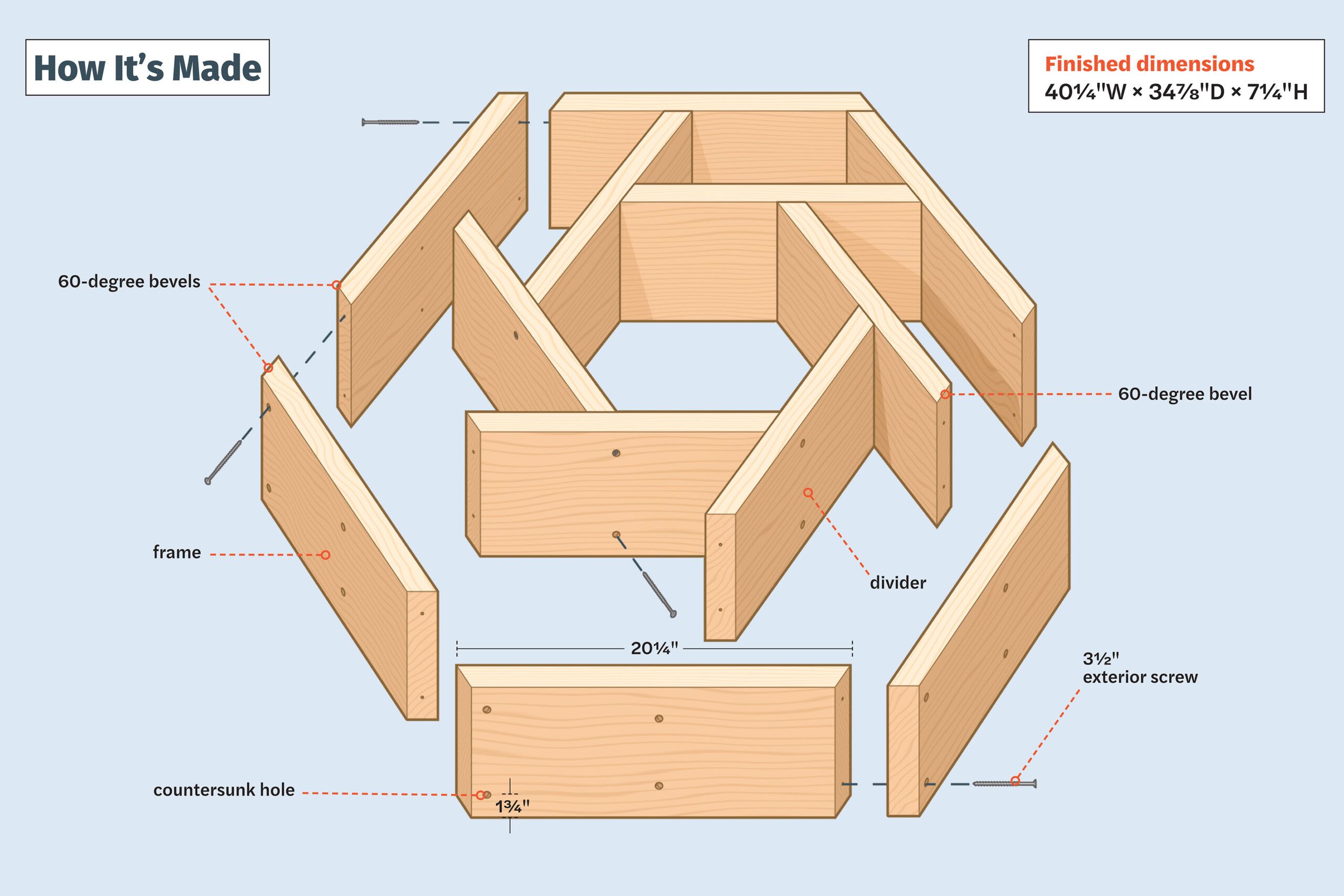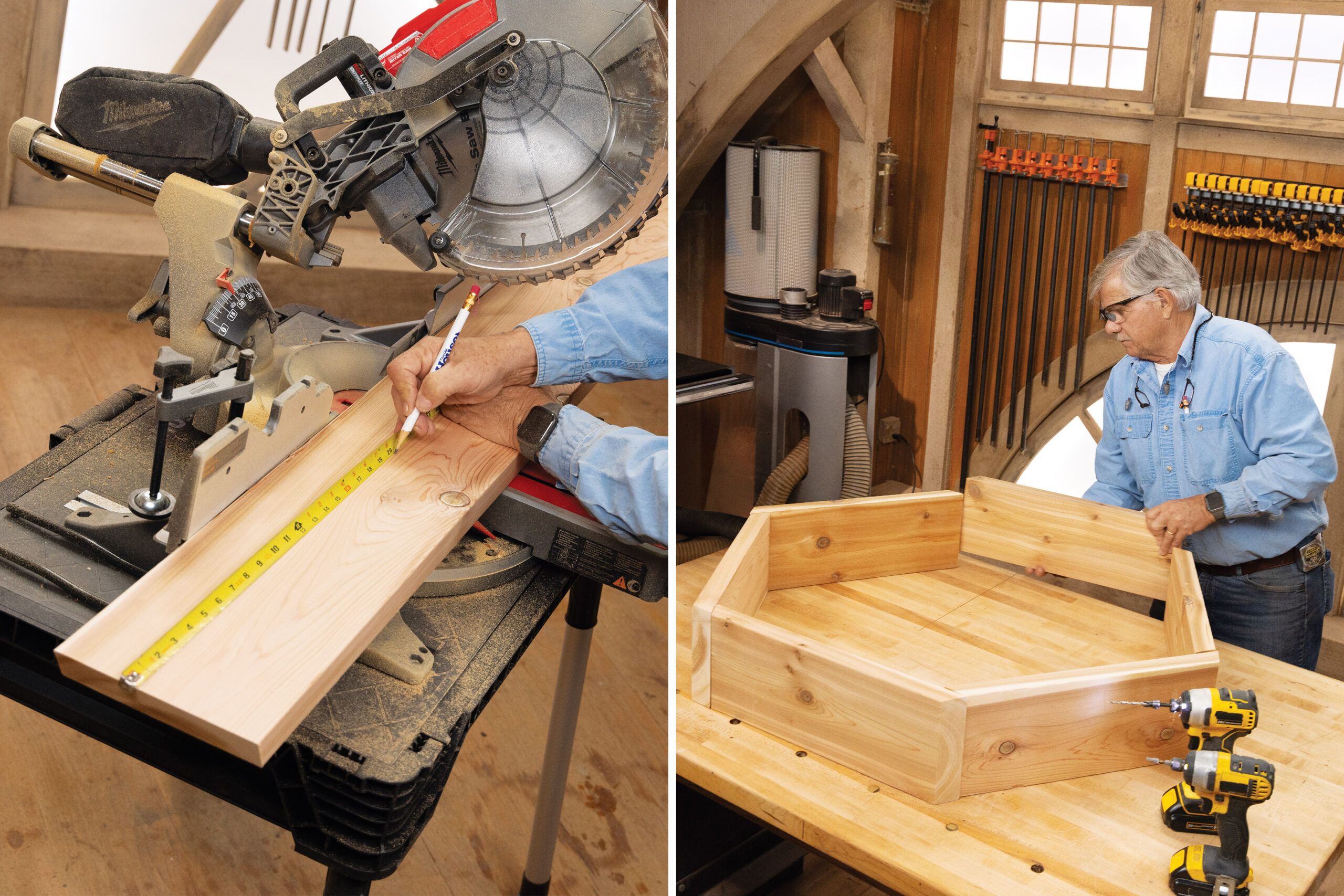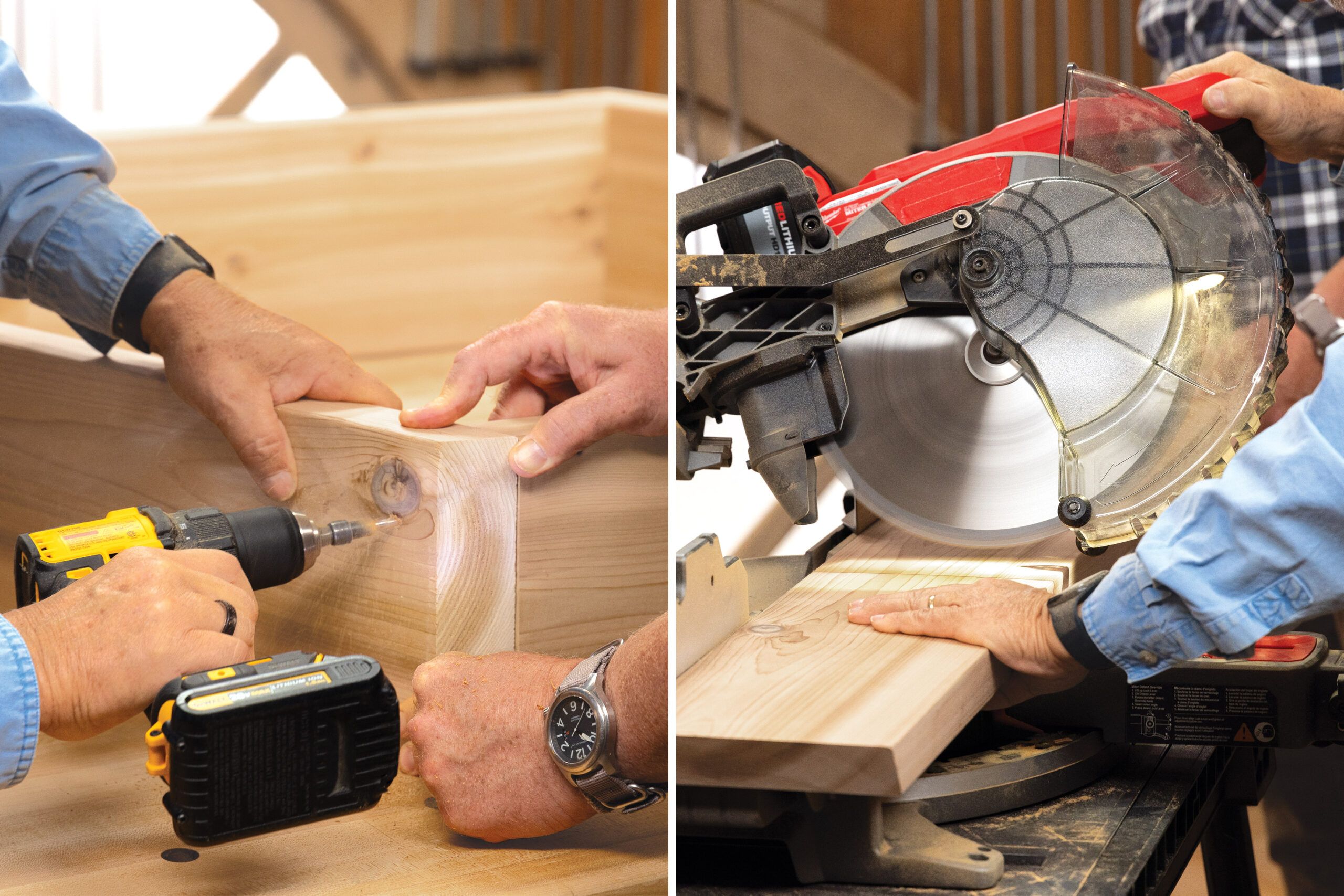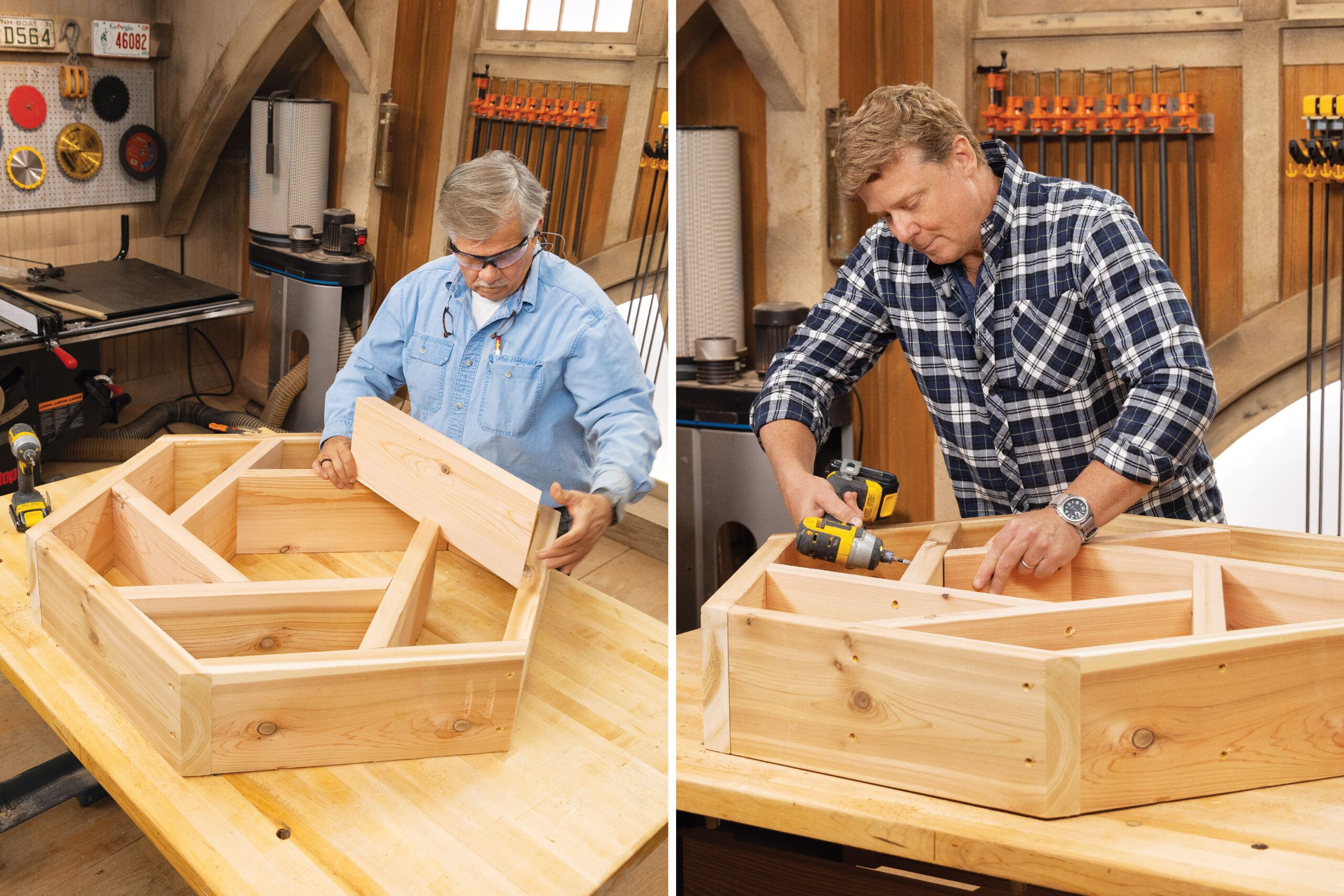We may be compensated if you purchase through links on our website. Our team is committed to delivering honest, objective, and independent reviews on home products and services.
A hexagonal herb planter has a unique and attractive design that offers separate compartments for growing different herbs. Whether you’re an experienced woodworker or a DIY enthusiast, building one is fairly straightforward. In the video above, Ask This Old House general contractor Tom Silva shows host Kevin O’Connor how to build a double-hexagon raised garden bed for herbs.
Tools and Materials Needed to Build a Hexagon Herb Planter
Choosing the right materials is important for durability and longevity. Here’s a list of materials you’ll need:
- Exterior wood sealer or paint (if desired)
- Stainless steel screws (3 1/2 inch)
- Three cedar 2-by-8-by-8 boards
- Wood glue (optional, for added strength)
Cedar is a top choice for outdoor projects thanks to its natural resistance to decay and insects. However, if cedar is not available or is too costly, pressure-treated lumber is a good alternative. Just be sure to let it dry thoroughly before using it to prevent shrinkage.
You’ll also need to gather these tools:
- Tape measure
- Miter saw with bevel capability
- Drill
- Drill bits (including a countersink bit)
- Hearing protection
- Pencil
- Safety glasses
- Sandpaper (various grits)
- Work gloves
If you don’t own a miter saw with bevel capability, you can rent one from a local hardware store.
How To Build a Hexagonal Herb Planter

Building a hexagonal herb planter involves several steps, from cutting the frame pieces to assembling the inner compartments. Don’t let all the angles intimidate you. Even if you don’t enjoy a math challenge quite the way Silva does, the pinwheel shape is easy to build. Just set your miter saw’s bevel angle once and follow our instructions.
Note: The following instructions will build a hexagonal planter roughly 40 1/2 inches in diameter, from point to point.
Step 1: Cut the Hexagonal Frame Pieces
To begin, you’ll need to cut the main frame pieces that will form the outer hexagon of your planter. This step requires precision so that all the pieces fit together properly.

Set your miter saw’s bevel angle to 30 degrees. This angle is necessary for creating the hexagonal shape. Begin by making a bevel cut on one end of your first board. Then, rotate the board so the opposite edge touches the fence. Measure 20 1/8 inches from the outer tip of the first cut and make your second cut. This measurement determines the size of your planter, so adjust if you want a larger or smaller final product.
Repeat this process until you have six identical pieces. For consistency, use a stop block on your saw if it has an auxiliary fence.
Step 2: Dry-Fit the Frame
Before securing the frame pieces together, it’s important to dry-fit them to make sure everything aligns correctly. This step allows you to make any necessary adjustments before final assembly.
Arrange the six cut pieces on your workbench, positioning them so the mitered ends overlap to form a hexagon. At each corner where the pieces meet, make two pencil marks on the outside faces of the boards. These marks should be 7/8 of an inch in from the end and 1 3/4 inches from both the top and bottom edges. They’ll guide you when drilling pilot holes for the screws.
Take a moment to make sure all pieces fit snugly together and that your hexagon is symmetrical. Make any adjustments needed before moving on to the next step.
Step 3: Assemble the Frame
With your frame pieces dry-fitted and marked, you’re ready to begin the assembly process. Silva uses simple butt joints to provide plenty of wood for the screws to bite into, which creates stronger corners.

Hold the corners tightly together to prevent shifting during drilling. Use a countersink bit to drill pilot holes at each of the pencil marks you made earlier. When drilling, angle the bit slightly so it enters at the center of the rear board to create a strong connection between the pieces.
Once you’ve drilled all the pilot holes, use 3 1/2-inch stainless steel screws to secure each corner. We recommend stainless steel for its resistance to rust and corrosion. Be careful not to over-tighten and split the wood.
Step 4: Cut the Dividers
The internal dividers give this planter its unique compartmentalized design. Cutting these pieces requires the same attention to detail as the frame pieces.
Keep your miter saw’s bevel angle set to 30 degrees. Cut six pieces, each measuring 18 3/8 inches long. As with the frame pieces, start by making a bevel cut on one end of each board. Then, rotate the board so the opposite edge touches the fence before making the second cut.
Remember that each divider’s long face should be the same length as a frame piece’s short face. This allows the dividers to fit perfectly within the hexagonal frame. Accurate cuts also maintain the integrity and appearance of the final piece.
Step 5: Assemble the Inner Hexagon
With your dividers cut, it’s time to create the inner structure of your planter. This step transforms your hexagonal frame into a compartmentalized herb garden.

Place the dividers inside the frame, positioning them so that one end meets the frame and the other butts against an adjacent divider. This creates a smaller hexagon within the larger frame, with triangular compartments between each divider and the outer frame.
Take care to properly align each divider before moving on to the next step.
Step 6: Fasten the Dividers
The final step in constructing your hexagon herb planter is securing the dividers in place. This step requires some maneuvering due to the tight spaces created by the inner structure.

Use 3 1/2-inch screws to attach the dividers to one another and to the frame. Because of the compartment layout, you may need to drill closer to the boards’ edges or at steeper angles for the inner connections. A right-angle drill/driver can be extremely helpful for working in these tight spaces.
Once all dividers are securely fastened, your hexagon herb planter is complete. Place it in your desired location in the garden, fill each compartment with appropriate soil for your chosen herbs, and begin planting.
Tips for Success When Building a Hexagon Herb Planter
To make sure your hexagon herb planter turns out beautifully and functions well, keep these tips in mind:
- Apply a wood sealer or exterior paint to protect the wood and extend the life of your planter.
- Think about adding drainage holes to the bottom of each compartment.
- Double-check all measurements before cutting to avoid wasting materials.
- Sand all cut edges to prevent splinters and improve the overall finish.
- Use a sharp pencil for marking for accuracy.
